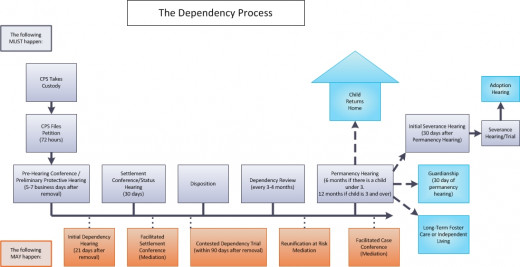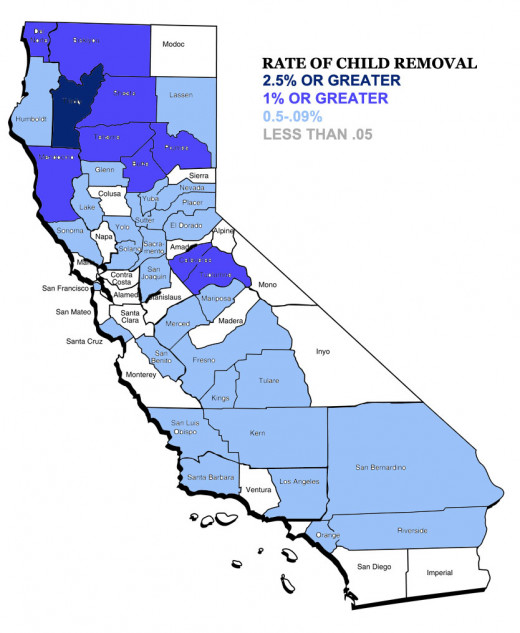Child Protective Services Explained

In the United States of America, it is a parent's fundamental right to raise their children without state interference. Each state in the US has its own agency responsible for the protection of children. In Los Angeles, California this agency is known as DCFS (Department of Children and Family Services). This agency is responsible for responding to reports of child abuse and neglect, and the handling of adoptions. In the past social workers were responsible for assessing child abuse reports and determining whether a child would be detained. However, these days a computer handles these tasks. The SDM (Structured Decision Making) tool was implemented into the DCFS agency as a way to assist social workers and lighten caseloads. However, there has been question as to how effective and reliable this tool really is..
This process starts as soon as a tip comes through the child abuse hotline. In Los Angeles county there are around 3,000 calls each week of suspected child abuse or neglect. The computer generates questions which the social worker answers based on the information from the report and allegations received. Based on these answers the computer will either add or deduct a points. The higher the score-the higher the risk level. At the end of the computer generated assessment the score is then verified by a social worker and if the level meets the legal threshold, a social worker begins an investigation. There has been criticism and argument of whether this computerized system is capable to assessing such serious situations. Social workers utilize personal experience and natural intuition, these make up a human beings decision making process which only a human can comprehend. However, others say that by using the SDM, it provides more objectivity where social workers are more subjective. When it comes to the safety of children, computers may not have the ability to make the best assessment. As a case moves from one focus to another, the answers to SDM's questionnaires build a complete case file containing all of the information found by both the computer and social workers’. Considering Los Angeles County's child protection system operates like an assembly line, no single person follows a case from start to finish; only the computer does. This might account for the many instances of children either being needlessly removed, or not removed when needed. Often times, social workers are called upon to unravel complicated and emotionally overwhelming situations and are not given adequate information, enough time, or the support from administration. These constraints can hinder a social worker’s ability make the best decisions for a child; and unfortunately, the repercussions of poor decision making can result in a broken family or the further abuse of a child. (Drury-Hudson, 1999)

Since social workers handle the most sensitive cases, they have to use intuition, observation and past experience to help make a crucial decision. Personal bias or issues can have an impact on the decision of the social worker. This is where the SDM was introduced as a way to get past personal biases of the human mind. The SDM uses a mathematical approach. Gathering information these tests identify associations and connections, which are used to estimate potential outcomes. There are certain attributes that define Structured Decision Making. One of the crucial factors that this method takes into account is the validity of particular predictors. This assessment ultimately weeds out the elements which are not related to the specified outcome being analyzed. In child welfare, social workers may be preoccupied by various characteristics of a case, which may or may not be deemed relevant.
Regardless of the overwhelming support for Structured Decision Making, it is essential to note the potential disadvantages to this tool. In regards to computer based decision-making tools, some argue that by supplementing the skills of a social worker, these tools can deter workers from using their clinical judgment and skill. Child welfare agencies in at 42 states, including California, have implemented, modified, or produced some form of risk assessment and have made it an important part of a social workers’ decision-making practices (Swift, 2009). While the specific needs and methods may vary across states, the basic expectation pertaining to risk assessment tools is that they help better case planning, thereby ensuing in the prevention of abuse and neglect, unneeded out-of-home placement, and appropriate services when needed (Gambrill & Shlonsky, 2001).
Social workers and computers use two very different approaches in determining risk, however a social worker should be the primary resource for making such crucial assessments. Utilizing both tools in conjunction with one another may increase validity and resources which can assist the social worker versus the social worker assisting a computer. Child abuse and neglect cases are emotional and sensitive. Critical thinking, good judgement and common sense are crucial when making an assessment that involves peoples lives and families. Computers in the SDM tool make assessments based on comparing results of past cases and finding similarities. Based on the similarities, the computer generates the an assessment of the level of risk. Since no two cases or alike, it is unlikely that what worked for one family will work for all families. Each case is unique and requires the skill and judgement only a human being can provide.








